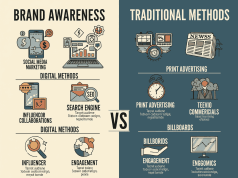In the fast-evolving world of digital marketing, programmatic advertising stands out as a revolutionary force that is reshaping how brands connect with consumers. By leveraging automation, data analysis, and advanced algorithms, programmatic advertising offers a streamlined approach to buying and selling ad space. This article explores how automation is transforming the advertising landscape, the benefits it brings to marketers, and the challenges that come with it.
Understanding Programmatic Advertising
At its core, programmatic advertising refers to the automated buying and selling of online ad spaces through technology. Traditional advertising methods often involve lengthy negotiations and manual processes, but programmatic advertising leverages sophisticated algorithms to match advertisers with inventory in real-time. This efficiency not only reduces costs but also enhances targeting capabilities, allowing advertisers to reach the right audience at the right time.
Key Components of Programmatic Advertising
Demand-Side Platforms (DSPs): These platforms allow advertisers to purchase ad space in an automated fashion. They enable advertisers to set their targeting criteria, budget, and bidding strategies.
Supply-Side Platforms (SSPs): SSPs are used by publishers to manage their available inventory. They work to maximize ad revenue by connecting their inventory to multiple DSPs for bidding.
Ad Exchanges: These are digital marketplaces where DSPs and SSPs meet to facilitate the buying and selling of ad space. Ad exchanges play a crucial role in ensuring that the best bid wins.
- Data Management Platforms (DMPs): DMPs collect and analyze consumer data from various sources. This data helps in audience segmentation and creating tailored advertising strategies.
The Benefits of Automation in Advertising
Enhanced Targeting and Personalization
One of the standout benefits of programmatic advertising is its ability to leverage vast amounts of data for enhanced targeting. Advertisers can reach specific demographics based on behavioral data, interests, and even purchasing history. This level of personalization leads to more relevant ads, increasing the likelihood of engagement and conversion.
Real-Time Bidding
Programmatic advertising operates on real-time bidding (RTB), allowing advertisers to buy ad impressions in an instant. This feature enables brands to respond quickly to market changes and consumer behavior, ensuring that they remain competitive. Realtime adjustments can lead to optimized ad spend and improved ROI.
Increased Efficiency and Cost-Effectiveness
Automation significantly reduces the time and effort required in the ad buying process. Marketers can focus on strategy rather than manual tasks. Additionally, programmatic advertising often results in lower costs as it allows for more competitive bidding and minimizes wasted ad spend through better targeting.
Transparency and Performance Tracking
With the tools provided by programmatic advertising, marketers can gain deeper insights into campaign performance. Data and analytics tools enable advertisers to track metrics such as impressions, click-through rates, and conversions in real time. This transparency allows for more informed decision-making and continuous optimization of campaigns.
Challenges in Programmatic Advertising
Ad Fraud
One of the primary concerns in programmatic advertising is ad fraud. Malicious practices such as bot traffic, fake clicks, and impression laundering can lead to wasted ad spend. Marketers must employ robust verification tools and employ practices like whitelisting to ensure their ads reach legitimate audiences.
Data Privacy and Compliance
As regulations around data privacy tighten, such as the GDPR in Europe and CCPA in California, marketers must navigate compliance challenges. Balancing targeted advertising with consumer privacy is a delicate task that requires transparent practices and consent-based data gathering.
Complexity of the Ecosystem
The programmatic advertising ecosystem is complex, with multiple players involved. For brands and smaller agencies, this complexity can be daunting. Understanding how to effectively leverage various technologies and platforms can require significant expertise and resources.
The Future of Programmatic Advertising
As technology continues to evolve, the future of programmatic advertising looks promising. Innovations in artificial intelligence and machine learning will further enhance targeting capabilities and predictive analytics. Additionally, the integration of omnichannel strategies will allow advertisers to reach consumers seamlessly across various platforms and devices.
Conclusion
Programmatic advertising is undoubtedly changing the game in the digital marketing landscape. By harnessing the power of automation, brands can achieve more efficient, targeted, and effective advertising campaigns. While challenges remain, the opportunities presented by programmatic advertising make it a vital tool for marketers looking to stay ahead in an increasingly competitive environment. As the industry continues to mature, embracing programmatic strategies will be essential for brands aiming to thrive in the digital age.









